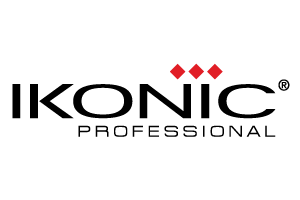
How to choose hair cutting scissors?
Without a doubt, your most crucial equipment is your hairdressing scissors. It's critical to get the correct hairdressing scissors when you consider how many hours a day you'll be using them and how soon your hands can become exhausted. When selecting your next pair of scissors, examine the following eleven factors.
What Work Will You Be Performing?
The type of hair cutting scissors you use is determined by the work you'll be doing. Will you be following the latest fashion trends? Will you primarily be a barber? What is your clientele's demographic? The answers to these questions will assist you in determining the type of hairdressing scissors you require.
Comfort
You should always be able to hold your hair cutting scissors comfortably in your hand. Hand tiredness and the danger of acquiring Repetitive Strain Injury or Carpal Tunnel Syndrome can be caused by uncomfortable scissors.
Size
A scissor's length is measured from the blade's very tip to the end of the longest finger hole, excluding the finger rest. Your personal choice and the type of cutting you'll be doing will determine whether you use a short or long blade. Place a pair of hair cutting scissors on the palm of your hand, with the finger hold touching the base of your thumb, to determine your optimal size. The blade's tip should be near the center of your middle finger's last portion.
Barbering shears have longer blades because they are used to cut shears over a comb, and the blades must be long enough to align with the side of the comb. Hair is brushed and held with the fingers, and regular hair cutting scissors are used to cut it in little steps. As a result, the blades of scissor blades are more evenly proportioned to the handle portion of the scissor.
Because hairdressers often cut hair in small increments to ensure precision, the hair cutting scissors they use only need to reach a few inches beyond the index finger (at most) when wielded.
The finger openings on the handles should be wide enough for your fingers to go in and out effortlessly. With continued application, this helps to avoid painful patches and calluses. On the other hand, if the holes are too loose, you risk losing control of the hair cutting scissors and dropping them.
Blade
You can choose between a blade with a beveled edge or one with a convex edge.
Shears with beveled-edge blades have a cutting edge polished into the blades. The slanted blades abruptly form an angle of about a millimeter from the honed edge on a steeper grade. The shears can cut more easily with this steeper angle than they could with a level cutting edge.
Convex blades have a shallow arc on the reverse side that is planned and produced. The blades have been milled to a razor-sharp tip. This results in a razor-sharp cutting edge that cuts effortlessly.
Convex hairdressing scissors have a finer cutting blade, but they're also more expensive and fragile. Sharpening is usually more expensive. Convex blades are constructed of stainless steel and are therefore heavier than beveled blades.
Beveled blades are less expensive and require less maintenance, but they may not provide the same smooth cut.
Scissor Handle
What type of handle you like is mostly a matter of personal preference and comfort.
The handles of level or even handle scissors are symmetrical.
Offset handle hairdressing scissors have one handle that is longer than the other, allowing you to cut with your arm and elbow in a more natural position. An offset handle lets the blades be properly aligned and positioned during operation, reducing stress on the hands and fingers.
Offset handle hair cutting scissors have a straight top handle, whereas crane handle scissors have a curved top handle. It also makes it possible to have a lower elbow position.
Right or Left Handed
Never use hair cutting scissors that are made for the other hand. Left-handed scissors with reverse blades make cutting natural and comfortable, eliminating hand and wrist strain.
Sharpening
Your barber scissors are the most crucial tool in your trade, and they need to be maintained on a regular basis. At least once a year, all barber scissors should be sharpened. If you have convex blades, you should always employ a professional sharpener.
Specialist Scissors
Should you invest in specialized barber scissors for specific jobs? It is contingent on the quality of the scissor you are purchasing. Slicing can be done with either a convex or beveled blade, but it will be much easier if you use good scissors. Thinning scissors, which contain an average of twenty-five teeth per blade, should be used. They enable you to thin your hair while keeping the contour of your haircut. Texturizing scissors are comparable to thinning scissors, but they provide a finishing touch to the design as they cut.
What is the best screw system?
Many scissors have a flat or regular screw system for adjusting the scissor tension, but you'll need a screwdriver to do so. As a result, many hairstylists prefer an adjustable screw since it lets you crank the little screw by hand to tighten or release the tension as needed.
To check for proper hairdressing scissor tension, completely open your scissors and then let one blade fall freely toward fully closed. It should easily stop at the ten-to-the-hour position when the tension is correct.
From top-of-the-line premium hairdressing scissors, our professional hairdressing scissors from Ikonic are designed to provide you with the best cutting experience.
